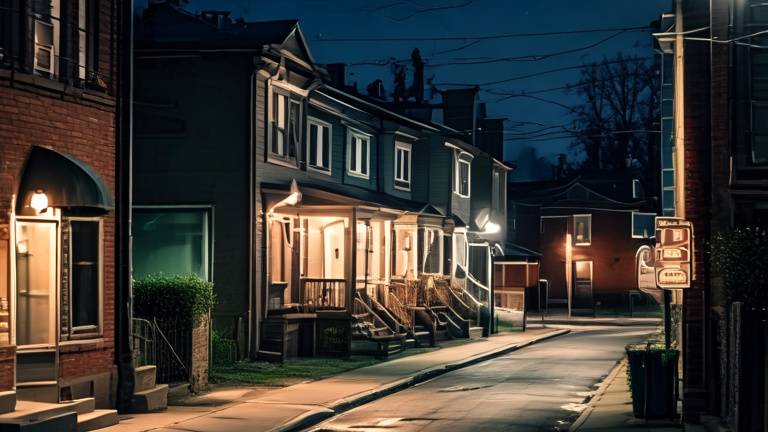Summary: A new study reveals a concerning connection between outdoor nighttime light exposure and increased prevalence of Alzheimer’s disease, with younger adults potentially at higher risk.
Estimated reading time: 6 minutes
In an era where artificial light illuminates our world 24/7, researchers have uncovered a troubling link between light pollution and one of the most devastating neurological conditions of our time. A new study published in Frontiers in Neuroscience suggests that exposure to excessive outdoor lighting at night may be a significant risk factor for Alzheimer’s disease (AD), particularly for adults under 65.
Dr. Robin Voigt-Zuwala, associate professor at Rush University Medical Center and lead author of the study, explains, “We show that in the US there is a positive association between AD prevalence and exposure to light at night, particularly in those under the age of 65. Nightly light pollution – a modifiable environmental factor – may be an important risk factor for AD.”
Why it matters: As urbanization increases and artificial lighting becomes more pervasive, understanding its potential health impacts is crucial. This research highlights a modifiable environmental factor that could play a role in the development of Alzheimer’s disease, offering new avenues for prevention and public health interventions.
Illuminating the Alzheimer’s-Light Pollution Connection
The research team analyzed light pollution maps of the lower 48 US states alongside Medicare data and other known risk factors for Alzheimer’s disease. They divided states into five groups based on nighttime light intensity, ranging from lowest to highest exposure.
The results were striking. For individuals over 65, the prevalence of Alzheimer’s disease was more strongly associated with nighttime light pollution than several other risk factors, including:
- Alcohol abuse
- Chronic kidney disease
- Depression
- Heart failure
- Obesity
However, traditional risk factors such as diabetes, high blood pressure, and stroke still showed stronger correlations with AD prevalence in this age group.
Young Adults: A Vulnerable Population?
Perhaps the most alarming finding was the impact on younger adults. For individuals under 65, nighttime light exposure emerged as the strongest correlate with Alzheimer’s prevalence among all factors examined in the study.
Dr. Voigt-Zuwala hypothesizes about this unexpected vulnerability: “Certain genotypes, which influence early-onset AD, impact the response to biological stressors which could account for increased vulnerability to the effects of nighttime light exposure. Additionally, younger people are more likely to live in urban areas and have lifestyles that may increase exposure to light at night.”
From Streetlights to Neurodegenerative Disease: Connecting the Dots
The link between light pollution and Alzheimer’s disease may seem surprising at first glance. However, it aligns with a growing body of research on the health impacts of disrupted circadian rhythms.
Dr. Michael Breus, a clinical psychologist and sleep specialist not involved in the study, comments: “Our bodies evolved with a natural light-dark cycle. Artificial light at night can disrupt melatonin production and other circadian processes that are crucial for brain health and waste clearance during sleep.”
While the exact mechanisms linking light pollution to Alzheimer’s risk remain unclear, several potential pathways have been proposed:
- Disrupted sleep patterns leading to reduced clearance of amyloid beta, a protein associated with Alzheimer’s pathology
- Chronic stress on the circadian system, potentially accelerating cellular aging processes
- Alterations in hormone production and metabolism that may influence neuroinflammation
Shielding Ourselves from the Dark Side of Light
The researchers emphasize that their findings should empower individuals to take action. Dr. Voigt-Zuwala advises, “Awareness of the association should empower people – particularly those with risk factors for AD – to make easy lifestyle changes. Easy to implement changes include using blackout curtains or sleeping with eye masks. This is useful especially for those living in areas with high light pollution.”
While the study focused on outdoor light pollution, the researchers also stress the importance of managing indoor light exposure, particularly from blue light-emitting devices. Suggestions include:
- Using blue light filters on electronic devices
- Installing dimmer switches and opting for warm-toned lighting in the evening
- Creating a completely dark sleep environment
Looking Ahead: Policy Implications and Future Research
This study adds to the growing call for more stringent light pollution regulations. Some US states have already implemented legislation to reduce excessive outdoor lighting, but more comprehensive policies may be needed to protect public health.
Dr. Voigt-Zuwala and her team acknowledge the limitations of their research, including its focus on a subset of the US population and the inability to account for individuals’ lifetime light exposure history. They emphasize the need for further studies to elucidate the mechanisms by which nighttime light exposure might influence Alzheimer’s disease risk.
As our world grows ever brighter, this research serves as a crucial reminder that not all progress comes without cost. By understanding and mitigating the potential risks of light pollution, we may unlock new strategies in the fight against Alzheimer’s disease and other neurodegenerative conditions.
Quiz:
- According to the study, which age group showed the strongest association between nighttime light exposure and Alzheimer’s disease prevalence? a) Adults over 65 b) Adults under 65 c) All age groups equally d) The study did not differentiate by age
- Which of the following was NOT mentioned as a potential mechanism linking light pollution to Alzheimer’s risk? a) Disrupted sleep patterns b) Chronic stress on the circadian system c) Increased vitamin D production d) Alterations in hormone production and metabolism
- What simple lifestyle change did the researchers suggest to reduce nighttime light exposure? a) Wearing sunglasses at night b) Using blackout curtains c) Avoiding all artificial light after sunset d) Sleeping during the day
Answer Key:
- b) Adults under 65
- c) Increased vitamin D production
- b) Using blackout curtains


